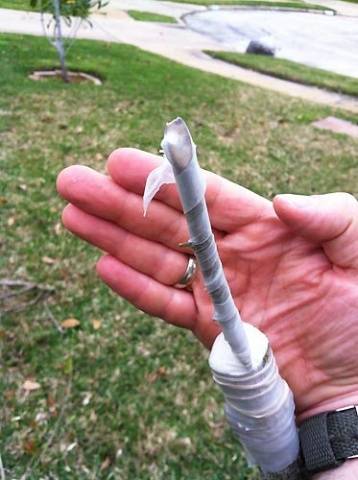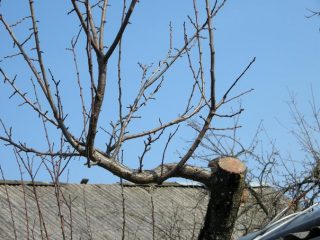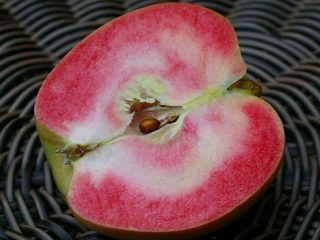Content
Time and method of grafting an apple tree experienced gardeners determine individually. The procedure can be done all year round, but spring is considered the most favorable period. There are many ways. Every gardener gives preference to the simplest grafting, which results in a high percentage of grafting of cuttings. To choose the most suitable method for yourself, you need to try them all. It will be easier for a novice gardener to graft an apple tree into clefts in the spring, which is where the practice should begin.
Optimal time for vaccination
If you wish, you can graft an apple tree into a cleft all year round. However, only experienced gardeners can boast of such abilities. Each season has an impact on the biological processes occurring in plants and trees, which determines the engraftment of the cutting.
Spring
Vaccination in the spring is considered the best choice. The time of year is characterized by the awakening of nature. The trees begin to move sap, which has a positive effect on the speed of engraftment. It is better to plant an apple tree with cuttings into clefts with the onset of warm weather, from March to April.
The later period from the end of April to mid-May is better limited to budding. The process is similar to grafting, but instead of a cutting, a bud is used. The advantage of spring vaccination is not only better engraftment. If the result is bad, the action can be repeated later, without forcing yourself to wait for the next season.
Summer
The two summer months of July and August are no less important for apple trees than the spring period. At this time, the fruit trees begin the second cycle of sap movement. However, grafting an apple tree into a cleft in summer is unlikely to work, since the cuttings already have large leaves. The best way is considered to be budding with a dormant bud.
Autumn
The beginning of autumn is not the best time to graft apple trees. In early September, in warm weather, only eye budding is used. Experienced gardeners can graft apple trees into young rootstocks from September to October. The scion will not take root on an adult tree. In addition to grafting into the cleft, they use the method behind the bark or in the butt.
Winter
Apple trees can be grafted even in winter, but they do it indoors. The procedure lasts from January until the end of March. Apple tree seedlings that are to be planted in open ground are subject to grafting after a maximum of 20 days.
Apple tree cuttings and rootstocks are stored in a basement, shed or cellar at a temperature of approximately 0OWITH.Seedlings are brought into a warm room 14 days before grafting, and cuttings 3 days before grafting.
Positive and negative aspects of the cleft method
Why many gardeners like grafting apple trees into clefts can be understood by familiarizing yourself with the advantages of the method:
- Almost 100% result. The cutting inserted into the cleft will take root faster than with another grafting method. In terms of reliability, only eye budding competes, but the process is a little more complicated.
- A simple grafting method can be overcome by an inexperienced gardener.
- It takes little time to graft into the cleft. This is important if you are working in a garden with a lot of material.
- If the bark of the rootstock is damaged, grafting the apple tree using the split method is the only solution to the problem.
- The rootstock can be an adult game tree, as well as a fruit-bearing apple tree.
The disadvantage of grafting an apple tree into a cleft is the formation of wood growth at the junction of the scion and the rootstock. Over time, the cutting will begin to develop, grow, and the thickening will become almost invisible.
Preparation of materials and tools
To perform the grafting, you need to prepare the rootstock and scion. Cuttings are chosen from those varieties of apple trees that you would like to grow in your garden. The rootstock can be a young seedling or an adult tree. Moreover, not only cultivated apple or game trees are suitable, but also pear, rowan, hawthorn, and quince. The best rootstock is considered to be pear.
The tools you will need are a sharp knife, a saw and a pruning shears. To treat the cut, garden pitch is used, and the graft itself is wrapped with electrical tape.
The quality of grafting depends on the speed of work. The cut areas should not dry out. Only sharply sharpened tools are used.A dull knife or pruning shears will crush the wood, ruin the bark, and you can’t even dream about the graft taking root.
Sequence of work execution
It is convenient to graft apple trees when the scion and rootstock are not thick. It is best to work with one-year or two-year-old material. It is more difficult to splice thick branches, since it takes longer to adjust the cut points. The procedure consists of the main steps: splitting the rootstock, preparing the scion, aligning and isolating the area to be joined.
Preparatory work
The process of grafting an apple tree begins with the selection of a rootstock. The trunk of a wildflower or other suitable seedling is cleaned of dirt, and then a cut is made with sharp pruning shears. A stump 15 cm high remains above the ground. To cut a thick trunk, instead of a pruner, use a sharp garden saw. If the cutting is grafted onto an adult tree, then the branch is cut down. The rootstock should be smooth, clean, with healthy bark without defects or thickenings. To graft one cutting, the rootstock is cut at an angle, and the scion is installed at the top of the cut.
The difficulty of splitting depends on the thickness of the rootstock. A thin branch can be easily divided with a sharp knife strictly in the center. The depth of splitting is about four times the diameter of the seedling.
Splitting a thick branch or stump occurs using a different technology. On the bark of the rootstock at the site of the supposed split, cut the bark with a sharp knife. This must be done on both sides of the seedling along the diameter of the trunk. The cuts will prevent rough tearing of the bark by creating smooth split edges. A sharp knife blade is placed in the center of the rootstock. It should coincide with the cut lines of the bark. Using strong hand pressure, split the wood into two parts. When the knife reaches a depth of 7 cm, a temporary wedge is inserted between the two halves.
Preparation and merging of the scion with the rootstock
Apple tree cuttings are prepared so long that there are three to five buds left above the cut. The excess top is cut off with sharp pruning shears. The bottom of the apple tree cuttings is cut into a wedge shape with a knife. The length of the pointed part is equal to four diameters of the scion.
When merging young thin branches, a pointed wedge of the cutting is inserted into the split until the cambium coincides. A cut strip of bark from the scion is left above the split for better fusion of the cuttings.
Two thin apple tree cuttings are inserted into a thick stump or branch cut. The graft is placed on both sides of the split. It is important to take into account the different thickness of the bark during such grafting. When splicing, you should not try to combine it. It is more important to take care of the cambium matching.
After combining the scion with the rootstock, the grafting site must be immediately protected.
Isolation vaccination
A small gap remains at the junction of the cutting and the rootstock. The entire area is treated with garden varnish for better healing. Gardeners prepare it themselves, but you can buy it in the store. The split is tightly tied with electrical tape so that the cuttings do not dangle. From above, the entire grafting site is additionally covered with a plastic bag. The film will not allow the cuts to dry out. A humid microclimate will be constantly maintained at the grafting site. On a hot sunny day, shade the grafted apple tree.
Sometimes gardeners even wrap the cutting itself with a special tape. The method is not bad, but you need to handle the buds carefully so as not to break them.The insulation is removed after the scion has engrafted, which is signaled by the blossoming leaves.
Video of grafting apple trees in spring into cleft according to all the rules:
Conclusion
Vaccination is quite an interesting thing. If a bad variety of fruit tree grows in your yard, you can always plant cuttings on it and enjoy delicious apples in the future. And to find a scion, just go to your neighbors and ask them to cut off one-year-old branches.

















